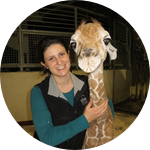The hormone of happiness - or What is oxytocin?

Only 48 hours ago, my project was launched. I am very excited about the progress – already 16% funded and still 28 days to go. I am so happy that you decided to join me on this journey.
In the next weeks I will post lab notes to share some more information about the research. I will dive into special topics of my work on placenta remedies.
When starting my research, most effort I spent on reading papers to find out which hormones can be found in placental tissue and what is special about them. I really like the review “Placentophagy: Therapeutic miracle or myth” that was published by C.T. Clark et.al. in 2015. http://www.ncbi.nlm.nih.gov/pubmed/26043976 It gives a great overview on the current state of research. Regarding to that review, placenta contains progesterone, iron and oxytocin.
Let´s have a closer look on the last one – Oxytocin. It is sometimes called the “Hormone ofHappiness”. If you lie naked in bed with your baby, snuggling up and feeling happy all over – you experience the action of this small peptide hormone…maybe accompanied by uterine contractions.
Oxytocin is important in many ways. This hormone helps developing maternal behavior and social bonding. It initiates and sustains milk ejection in response to suckling during lactation. And it triggers uterus contractions, what is essential during labor. Afterpains are as well induced by Oxytocin. In the moment women breastfeed their newborn, Oxytocin is released and induces back-formation of the womb. If you want to continue reading about this exciting hormone, you can find more information in this review: http://www.ncbi.nlm.nih.gov/pubmed/20626426
We know that term placenta, that means a placenta at due-date, contains Oxytocin. To be specific: 1.81 ng per gram placental tissue. http://www.ncbi.nlm.nih.gov/pubmed/3833532
What we don’t know is, if Oxytocin is still contained in placenta capsules. According to Clark et.al, the “maintenance and stability in raw tissue and in preparation, as well their effects after consumption on the postpartum woman have not been tested.”
Through this project we will be the first research team that we know of that will test whether or not Oxytocin is present in raw and dehydrated placental tissue!
Your funds are going towards this actual research. Throughout the next 4 weeks I'll be sharing more information on the other hormones we will be testing for. If you have any questions about the science, don't hesitate to ask me in the comments!








0 comments